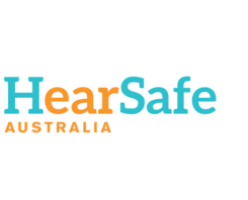In today's fast-paced and often noisy work environments, safeguarding our employees' hearing is more important than ever. As we know from recent news, such as the case of Craig Keogh, a former miner diagnosed with 'black lung' disease who was awarded a record $3.2 million in damages, the impact of occupational hazards can be devastating. While this case highlights respiratory issues, it serves as a stark reminder of the need for rigorous health and safety measures—in this instance, the protection of our employees' hearing.
Understanding the Risks
Hearing loss can occur slowly over time due to prolonged exposure to high noise levels, commonly found in industries like mining, construction, manufacturing, and even certain office environments. According to Safe Work Australia, noise-induced hearing loss (NIHL) is one of the most common workplace injuries, yet it remains largely preventable.
Excessive noise not only affects employees’ auditory health but can also lead to issues such as increased stress levels, decreased productivity, and impaired communication. These factors can create a ripple effect impacting workplace safety and morale.
The Universal Right to Hearing Safety
Every employee has the right to return home from work every day without adverse health effects. Implementing effective hearing conservation programs is essential for companies committed to safeguarding their workers. These programs can include:
-Regular Noise Assessments: Evaluating noise levels in the workplace to identify areas where hearing protection may be necessary.
- Provision of Personal Protective Equipment (PPE): Providing high-quality earplugs or earmuffs tailored for the specific work environments of employees.
- Training and Awareness :Educating employees about the risks of excessive noise exposure and the importance of using hearing protection consistently.
- Monitoring Hearing Health :Regular audiometric testing can help track employees’ hearing health over time, allowing for early intervention if deterioration is detected.
The Legal and Financial Implications
The case of Craig Keogh underscores another critical point: the legal and financial ramifications of neglecting workplace safety. Beyond the ethical obligations to protect employees, failing to implement proper safety measures can lead to costly lawsuits, as seen in this record-setting damage award. Companies must recognise that investment in safety equipment and training is not just a regulatory requirement but a smart business strategy that can save money in the long run.
Moving Forward with Confidence
For businesses in Australia, prioritising employee hearing safety should be a non-negotiable aspect of operational practices. Working with organisations like Hearsafe Australia can help companies develop customised strategies to meet their specific needs while ensuring compliance with health and safety regulations.
In light of cases like Craig Keogh's, the message is clear: protecting our employees' hearing is a fundamental responsibility that we cannot afford to overlook. By taking proactive steps today, we can build a healthier, safer workplace for everyone—one where our employees thrive and return home ready for life beyond the workplace.
Conclusion
As we continue to advocate for better workplace practices, let us remember that our employees are our most valuable asset. By focusing on hearing safety today, we create a foundation for a resilient future. If you're looking to enhance your workplace safety measures, don’t hesitate to reach out to Hearsafe Australia for guidance and support. Together, we can make a meaningful difference in protecting the hearing and overall health of our workforce.



